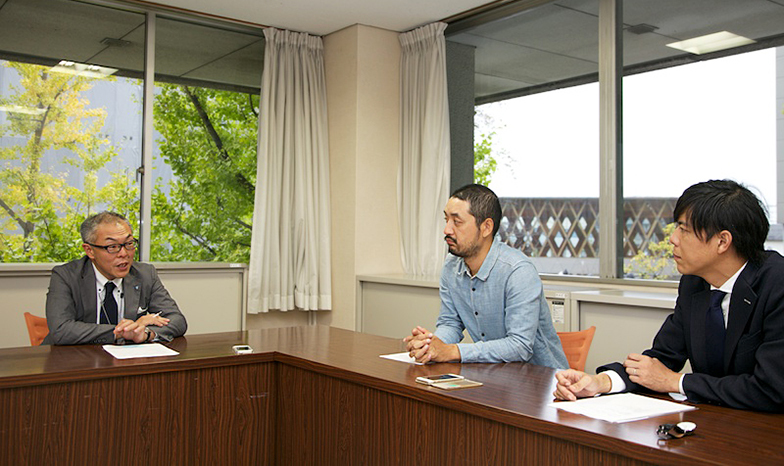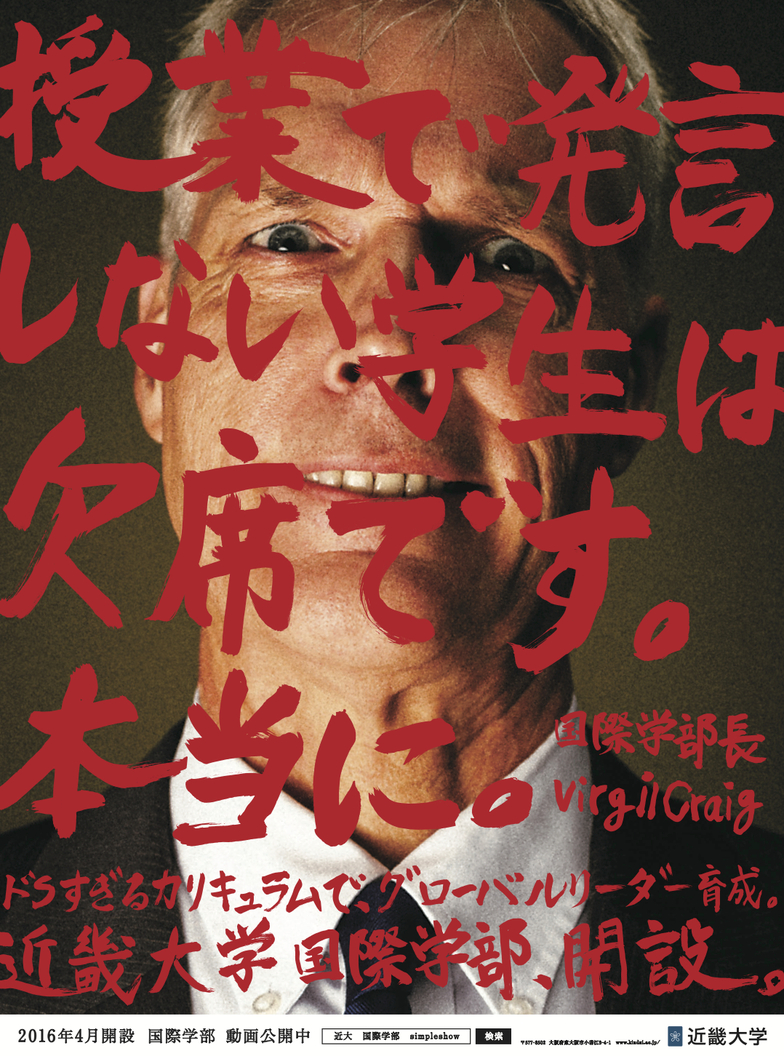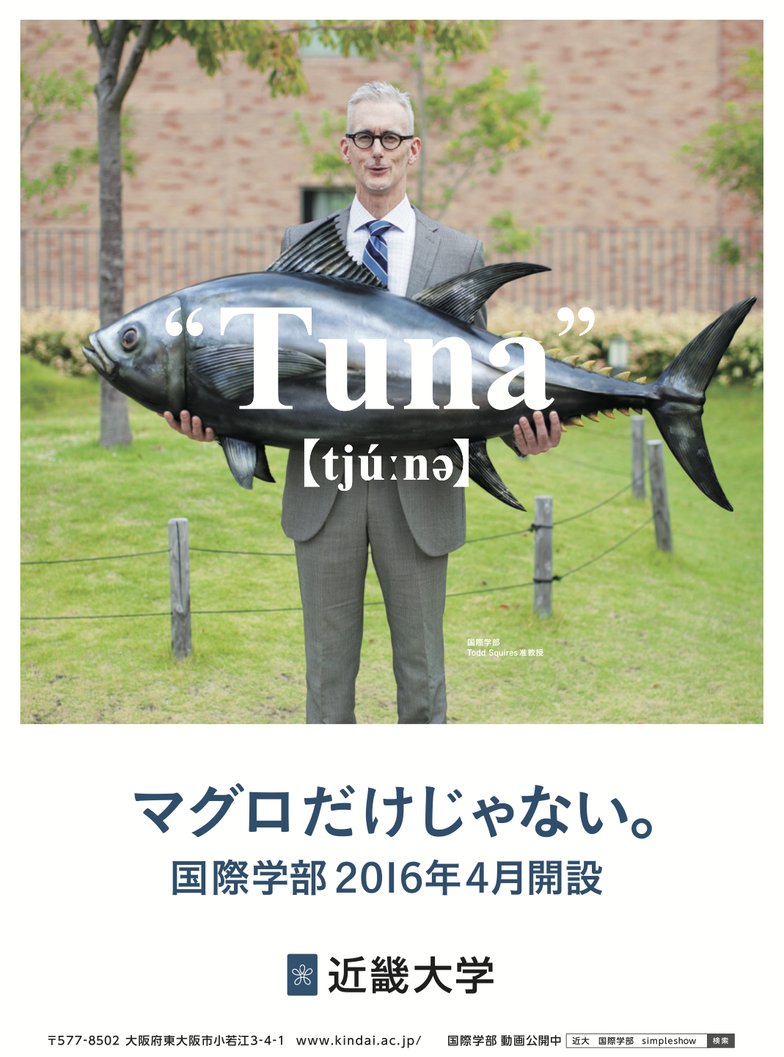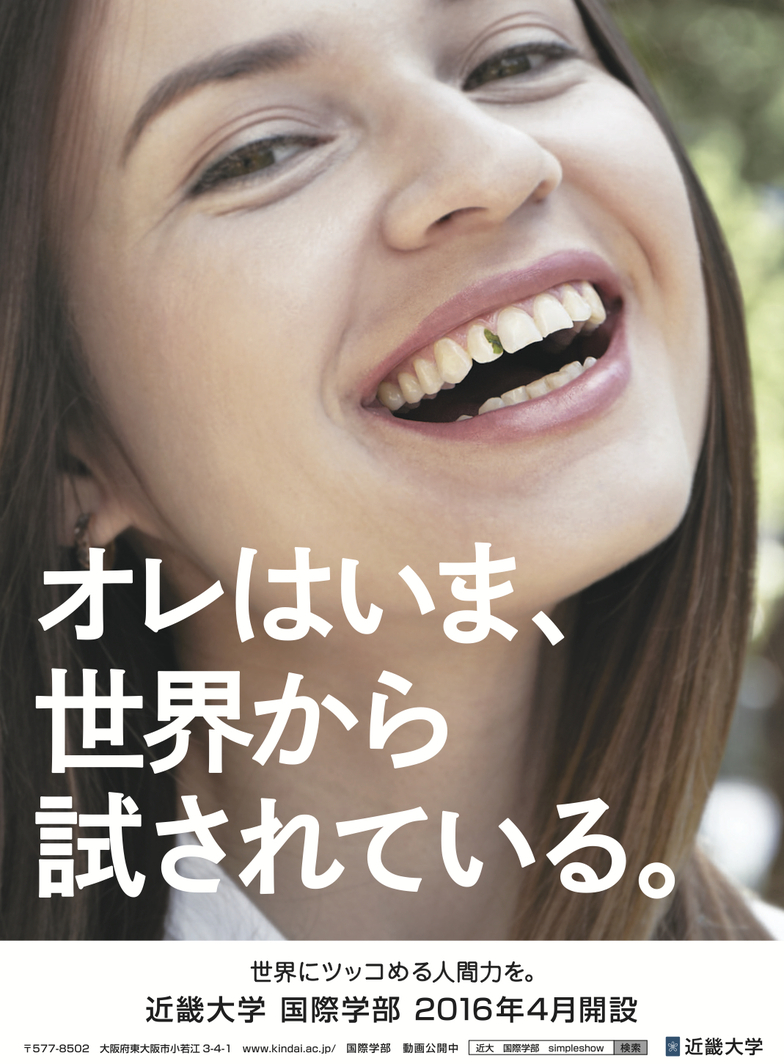The annual "Newspaper Convention," a major event in the newspaper industry, was held in Osaka on October 15th for the first time in 29 years. To coincide with this, five teams led by Keita Kusaka of Dentsu Inc., who had previously organized a shopping district poster exhibition to highlight the potential of newspaper advertising, each created a 15-column full-page advertisement for Kinki University's Faculty of International Studies. Dentsu Inc. implemented a unique initiative: placing ads with distinct creative concepts in the morning editions of Japan's five major national newspapers on the day of the Newspaper Convention. This time, we present a two-part roundtable discussion featuring Kinki University's Public Relations Director, Ishihiro Seko, who consistently leads university PR with an "aggressive stance," alongside Keita Kusaka and Takashi Hoshihara, the initiators of this project.

(From left) Mr. Seko Ishihiro, Keita Kusaka, Takashi Hoshihara
Using the Shopping District Poster Exhibition Approach for Newspaper Advertising
Hoshihara: Ever since seeing the Bunno-sato Shopping District poster exhibition, I thought, "This would absolutely work well with newspapers!" and kept thinking about how to connect it to newspapers. But when it came time to actually execute it, it was difficult. Especially the rule from the shopping district poster exhibition – no client checks before publication – was a high hurdle.
Kusaka: Exactly! For advertisers, it takes a lot of courage to embrace that poster exhibition vibe – where you completely entrust the ad content to someone else – in a newspaper. Why did Kindai University agree to this project?
Sekō: I knew about Kusaka-san's poster exhibition from the start and always found it hilarious. So, I was convinced from the beginning that doing this in a newspaper would definitely be fun too.
Kusaka: There was no pre-approval or anything, but weren't you secretly pretty worried?
Sekō: In the past, whenever we did adventurous ads ourselves, we always made the university's top brass nervous. But since we have a track record of getting a good response from the public, they've gradually become more tolerant of interesting ads.
This time, the poster exhibition's past success was clear, so saying we were teaming up with Mr. Kusaka made it easier to convince everyone.
Kusaka: Why did you choose the newly established International Studies Department as the subject for this ad?
Sekō: When the new International Studies Department was decided, I made up my mind about something. I wasn't going to say the usual clichés other universities often use, like "cultivating globally competitive talent." Our unique feature is that everyone studies abroad starting in their first year. I was struggling with how to express that impactfully when we got the offer for the newspaper contest. It was a godsend.
Kusaka: What were your thoughts when you actually saw the ad published?
Sekō: I said I'd leave it to you, but I was still anxious—would it really be okay? It was incredibly thrilling. And then the satisfaction when I saw it published. That thrill is addictive.
Hoshihara: I was also secretly worried until it actually ran: "Will people find this interesting?" The poster exhibition got people excited, but this wasn't a poster for the local shopping district – it was in a newspaper seen by everyone. Would the appeal translate to the main newspaper audience, the 50-60 age group?
Sekō: But I actually think it was great that it was in the newspaper. The night before publication, I got an email saying, "This is the final version for tomorrow's edition." I was on a business trip, so I saw the manuscript on my phone screen. It was the first time I'd seen it. Honestly, at that moment, I thought, "Huh...?" Is this really funny? Kusaka, is this really what you wanted to do?
Kusaka: Oh, that's bad news (laughs).
Sekō: But when I actually saw the printed ad in the newspaper the next day, I laughed out loud on the bullet train. You just couldn't get the humor across on a tiny smartphone screen. As a physical ad, newspapers offer the largest possible size, right? Some ads only work because of that unique 15-column layout. You can probably see this ad online too, but this is definitely an ad you should see in the actual newspaper and laugh at.

Asahi Shimbun CD: Keita Kusaka C: Oki Miichi AD: Daisuke Matsunaga D: Yoshihiro Kitayama P: Takahiro Maruo Pr: Atsushi Hisayasu, Takashi Hoshihara, Ryo Nishihara

Mainichi Shimbun CD&P: Keita Kusaka C: Aiko Ishimoto AD&D: Kyohei Nomura Pr: Atsushi Hisayasu・Takashi Hoshihara

Yomiuri Shimbun CD&P: Keita Kusaka C: Kosuke Matsushita AD&D: Yoichi Takigami Tuna: Hidenobu Hagiwara Pr: Atsushi Hisayasu, Takashi Hoshihara

Sankei Shimbun CD Keita Kusaka C: Mai Kuramitsu AD&D: Yoshimi Senoo P: Hirotaka Masuda Pr: Atsushi Hisayasu, Takashi Hoshihara

Nikkei Shimbun CD: Keita Kusaka C: Yuri Otsuki AD: Shinya Inoue D: Ryo Kimura, Genki Hayashi P: Takuya Otaki Pr: Atsushi Hisayasu, Takashi Hoshihara, Ryo Nishihara
Criticism? I couldn't be happier.

Hoshihara: Did you see the ad? Were the reactions from people around you okay?
Sekō: I got two long complaint emails saying, "You shouldn't run ads like this." Honestly, I was thrilled, absolutely thrilled. Having run ads in the past, I know all too well that the worst thing is getting no reaction at all. The fact that people took the trouble to email detailed complaints shows they reacted strongly—that's incredible.
Kusaka: While only positive reactions tend to get noticed, your ability to welcome any kind of response is a unique perspective, one that comes from being the person who took on this project, Mr. Seko.
Sekō: Hey, I get the urge to make sleek, cool ads sometimes too. But we can't just blast out ads willy-nilly. For us, the real challenge is how much impact we can make with a single ad placement. I think how much buzz it generates is what really matters.
Kusaka: You used to work in PR for a railway company, right? Did that experience shape your thinking?
Sekō: That's part of it. Railway PR ads were mainly about manners—things like "Please refrain from talking on your phone inside the train." I tried pitching ideas to make them more interesting, but they just wouldn't accept them.
Kusaka: That situation must have been pretty stressful for you, Mr. Seko (laughs).
Sekō: Well, it's unavoidable because the level of crisis awareness in the railway industry and private universities is different. University entrants are almost all 18-year-olds, but by 2032, the population of 18-year-olds will be half what it was 40 years ago. Other companies might adjust their target demographic slightly to maintain sales even if their core audience shrinks. But universities are fixed on targeting 18-year-olds. The fact that this core demographic will halve in just 40 years creates an immense sense of crisis.
Kusaka: Do all universities share this sense of crisis? Are they doing something like Kindai University?
Sekō: I suspect most just feel vaguely uneasy, but few are actually doing anything about it. Just look at other universities' ads. They slap up photos of buildings they've arbitrarily decided are their symbols, then slap up photos of students who probably think they're cool at that university, grinning away. Seeing a building photo and thinking, "Oh, this is XX University~, it really is wonderful~" – only people connected to that university would think that. Running ads like that won't get people who don't know the university to take an interest, will it?
< Continued in Part 2 >









